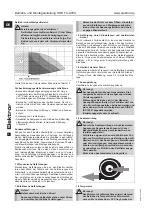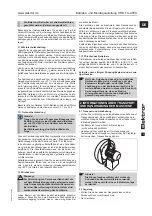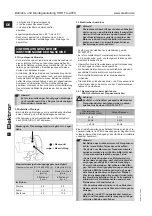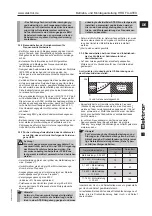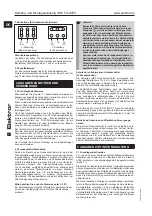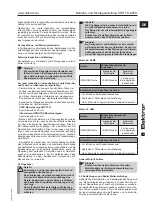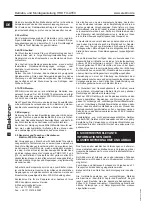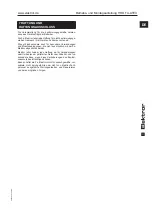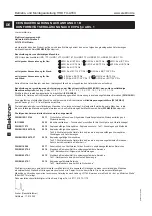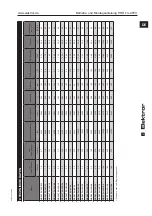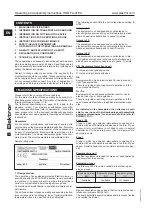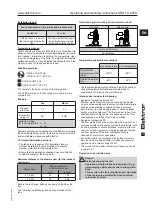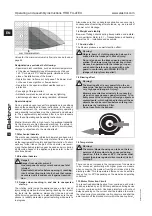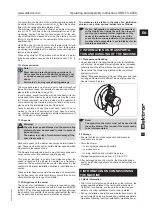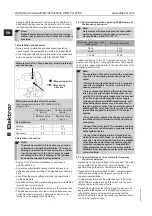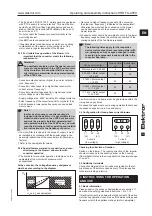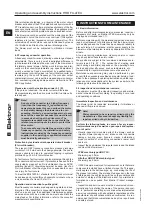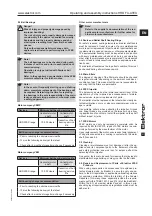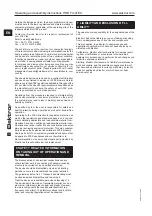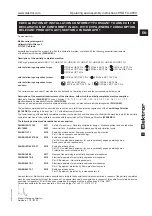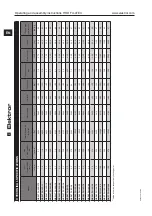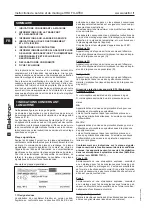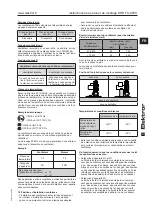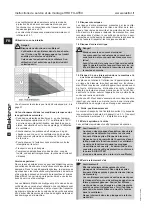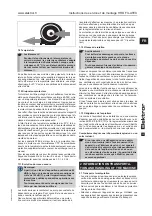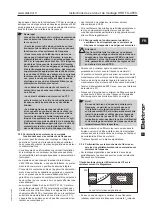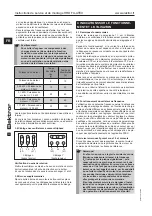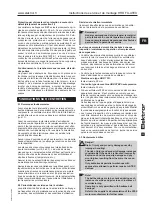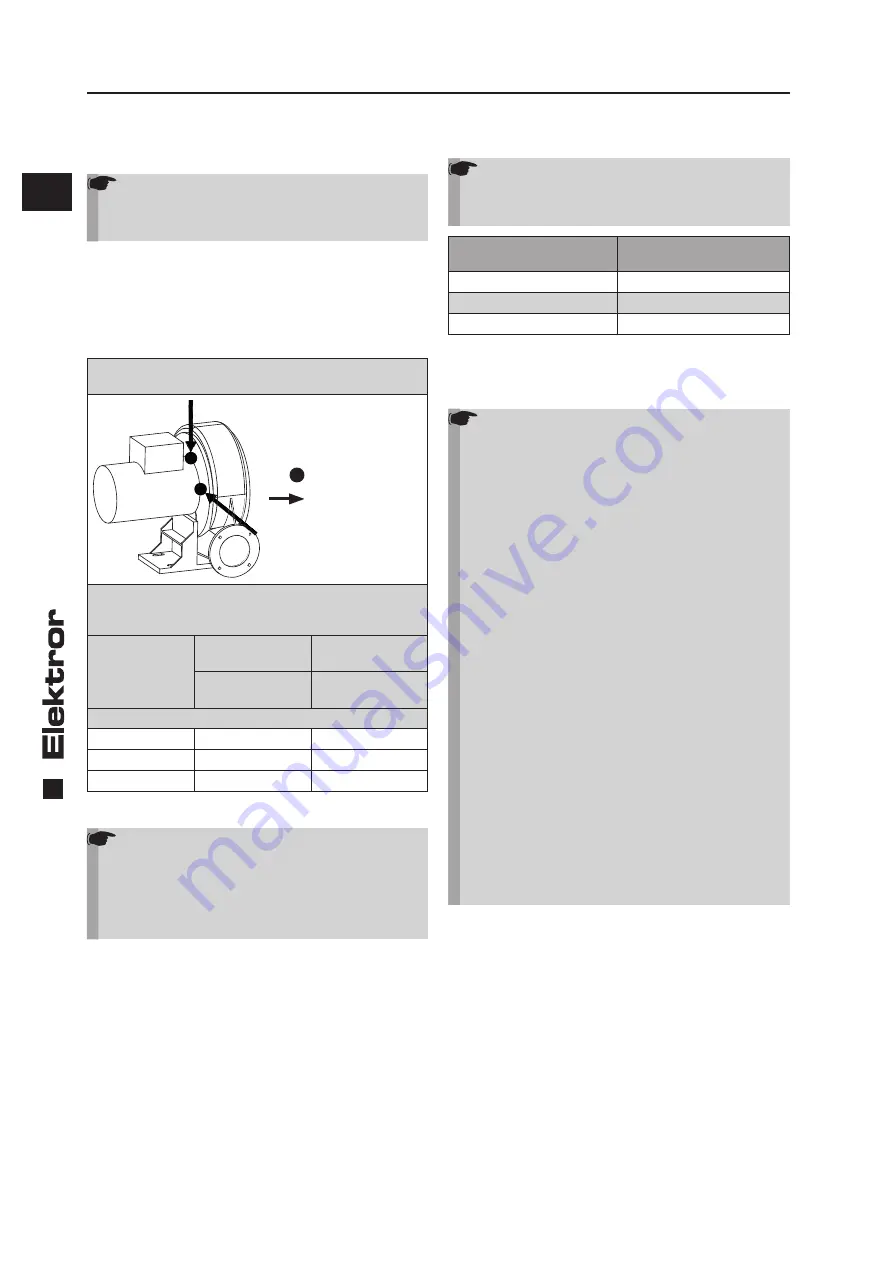
18
EN
Operating and assembly instructions HRD FU-ATEX
www.elektror.com
9016330 01.20/08
unapproved replacement of components constitutes non-
designated use and renders the warranty void. The resul-
tant risk shall be borne solely by the customer or owner.
Note!
Reliable protection against incursion by foreign
matter, rust, airborne rust and other iron oxides is
provided.
3.2 Installation and assembly
• During set-up, installation and subsequent operation,
never expose the equipment to vibratory or impact loads.
• Cover the open intake and/or a discharge side connection
with wire guards compliant with DIN EN ISO 13857.
Measurement at the
fl
ange bearing shield, preferably
near the bearing
= Measuring point
= Measuring
direction
Maximum permissible vibration speed
(Limit values according to ISO 14694:2003 (E),
category BV-3)
Rigidly mounted
[mm/s]
Flexibly mounted
[mm/s]
E
ff
ective value
[r.m.s.]
E
ff
ective value
[r.m.s.]
At installation
Start-up
4,5
6,3
Alarm
7,1
11,8
Shut-down
9,0
12,5
3.3 Electrical connection
Note!
The work described in this section may only be
performed by a quali
fi
ed electrician. The dimen-
sioning and selection of connecting lines, includ-
ing the connection of the motor, must be made
according to the circuit diagram in the junction
box and the relevant local regulations.
• Design of the electrical installations in accordance
with EN 60079-14.
• Complete equipotential bonding must be achieved; i.e.
su
ffi
cient and proper earthing of all electrically conducting
parts.
• Check that the mains voltage matches the speci
fi
cation
on the nameplate.
• The drive motors used are exclusively explosion-protected
three-phase current motors.
• The safety earth terminal can be found in the terminal box.
• The additional content from the motor and frequency con-
verter manufacturer must be observed and can be ob-
tained from the supplier documentation.
3.3.1 Special features when operating ATEX blowers at
the frequency converter
Note!
Only motors with pressure-proof encapsulation
must be operated at the frequency converter,
marked Ex db eb II2GD T4 135 °C!
Maximum frequency (see
rating plate)
Minimum frequency
50 Hz
5 Hz
60 Hz
5 Hz
> 60 Hz
35 Hz
A direct evaluation of the PTC-resistor sensor by the fre-
quency converter is not usually permissible in ATEX applica-
tions (in this regard, please refer to the speci
fi
cations of the
converter manufacturer!).
Note!
For operation of the drive motor with a frequency
converter, the following points should also be
noted:
• Only motors marked Ex db eb motor „frequency
converter compatible“ must be used at the fre-
quency converter.
• Unless expressly stated by the motor manufac-
turer, the converter supply voltage must not ex-
ceed 400 V and the cable length must not exceed
20 m. For longer cable lengths, higher supply
voltages and/or special EMC requirements, suit-
able additional measures may be necessary. In
this case, please contact the converter supplier. If
additional
fi
lter components are required, ensure
that su
ffi
cient space is reserved in the control
cabinet.
• The connection cables must be kept short and
laid without interim terminal points and without
connectors.
• Connect the motor and PTC evaluation cable be-
tween the motor and frequency converter output
with shielded cables.
• Connect the shielding braid of all cables con-
sistently and on both sides, i.e. to the frequency
converter, motor and control cabinet, to establish
a low impedance electrical connection with the
protector conductive system. A suitable EMC
cable gland must be used on the motor side to
establish a low impedance contact with the entire
cable shielding.
3.3.2 Special features of drive motors for frequency
converter operation:
• Depending on the input voltage of the converter, the motor
can operate with a delta or star-point connection. The
speci
fi
cations on the motor nameplate are de
fi
nitive.
• Please refer to the information on EMC-compliant instal-
lation and assembly of the frequency converter, in the
supplier documentation.
• Tripping relays that meet the criteria set out in Directive
IEC 61508 are suitable and able to switch to a fail-safe
safety position in the case of faults.
• Connect the output contact of the triggering device to an
appropriate release input on the frequency converter or
take another appropriate measure, ensuring that the
switch-o
ff
of the fan meets the safety requirements and it
can only be reset manually.

